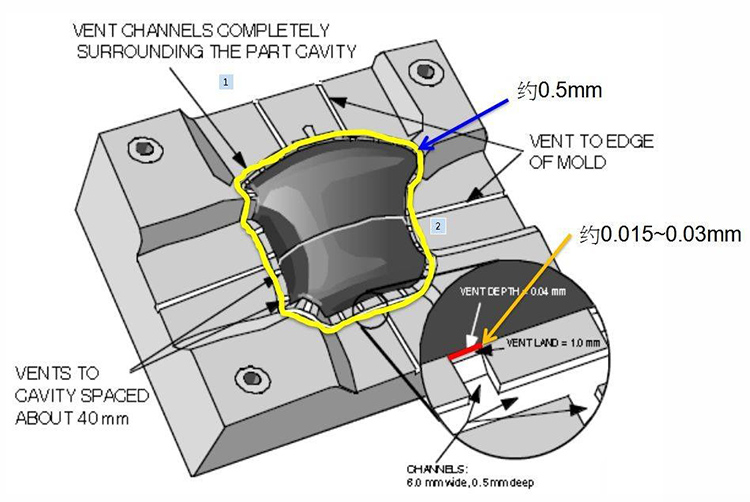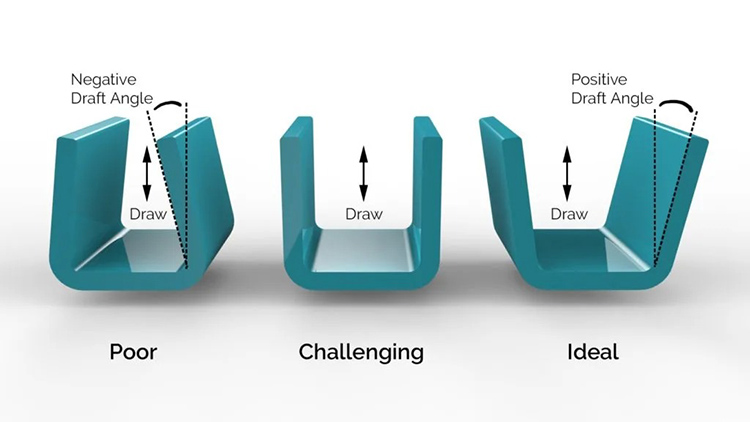In the plastic processing industry, injection molding defects are a common and critical issue that directly affects product quality and production efficiency. As a company specializing in the development of plastic products and molds, Okoman Packaging Technology (Shanghai) Co., Ltd. has accumulated extensive experience in injection molding processes and production, committed to providing high-quality molded products. This article will delve into the common types of injection molding defects and their causes, helping businesses better understand how to optimize the injection molding process and improve product quality.

What Are Injection Molding Defects?
Injection molding defects refer to flaws in the surface, structure, or performance of a product caused by various factors during the injection molding process. Common injection molding defects include:
Surface defects: Such as bubbles, flow marks, and streaks
Size inaccuracies: Product dimensional deviations or failure to meet design specifications
Incomplete molding: Products that are not fully filled in the mold or lack certain details
Cracks and breakage: Injection molded parts that are prone to cracking or breaking during use
These issues not only affect the appearance of the product but can also impact its functionality, leading to lower customer satisfaction and increased production costs.
Main Causes of Injection Molding Defects
Injection molding defects usually result from multiple factors interacting together. Okoman Packaging Technology (Shanghai) Co., Ltd. has developed the ability to accurately identify and resolve these issues through years of technical expertise. Below are some common causes of injection molding defects:
1. Raw Material Issues
Substandard plastic quality: If the plastic material used has inherent quality problems, it may lead to defects such as bubbles, cracks, and other imperfections in the molded product. For instance, commonly used injection molding materials like PMMA (polymethyl methacrylate) and PLA (biodegradable materials) can cause issues if the raw material quality is unstable, affecting the final product's strength and appearance.
Excessive moisture: Plastic materials need to be stored and processed under appropriate humidity conditions. If the raw material absorbs too much moisture, it can produce bubbles during injection molding, leading to surface defects in the product.
2. Improper Injection Molding Process Parameters
Incorrect temperature settings: Whether the injection molding temperature is too high or too low, it affects the flowability of the material and the molding outcome. Excessively high temperatures can overheat the plastic, causing surface defects in the product, while too low a temperature may prevent the plastic from fully filling the mold, leading to incomplete molding.
Insufficient injection pressure: If the injection pressure is too low, the plastic may not fully fill the mold, creating voids or defects in the final product.
Inadequate cooling time: If the cooling time is too short, the molded parts may not solidify fully before being removed, resulting in deformation or cracks.
3. Mold Design and Maintenance Issues
Poor mold design: The mold design directly affects the quality of the injection molding process. If the mold’s flow channel design is inadequate, it may lead to uneven material flow, resulting in defects such as flow marks or bubbles.
Aging or damage to the mold: Over time, molds may suffer from wear and tear, aging, or damage, which can lead to defects in the molded products.
4. Operator Skill Issues
Improper operation: Operators who do not set or adjust the injection molding machine properly may contribute to defects in the production process. For example, incorrect machine parameter adjustments or overlooking the necessary material pre-treatment steps can cause defects.
Lack of experience: Even with the same equipment and conditions, operators who lack experience may not be able to identify and address issues in the production process in a timely manner, leading to injection molding defects.
5. Environmental Factors
Temperature and humidity fluctuations: The injection molding process is sensitive to environmental temperature and humidity. Significant changes in workshop temperature or humidity can affect the material’s flowability, leading to instability in product quality.
Airborne contamination: Dust or foreign particles in the air can also be incorporated into the plastic, leading to defects during the molding process.
How to Avoid Injection Molding Defects?
As a company with extensive experience in plastic injection molding and mold development, Okoman Packaging Technology (Shanghai) Co., Ltd. emphasizes that the key to preventing injection molding defects lies in optimizing each link of the process, from raw material selection to process control, mold design, and maintenance. Here are some optimization suggestions:
Choose high-quality raw materials: Ensure that plastic materials meet quality standards and are appropriately dried to prevent moisture absorption.
Optimize injection molding process parameters: Adjust injection molding temperature, pressure, and cooling time accurately based on product requirements and material characteristics to achieve the best molding result.
Improve mold design and maintenance: Regularly inspect and maintain molds, promptly replace worn or damaged components, and ensure that the mold design is reasonable with uniform flow channels.
Train operators: Improve the technical skills of operators by providing regular training to ensure they are proficient in setting and adjusting the injection molding machine.
Control environmental conditions: Maintain appropriate temperature, humidity, and cleanliness in the workshop to ensure stability in the injection molding process.
Conclusion
Injection molding defects are common issues in the plastic processing industry. Understanding the causes and taking effective preventive measures is crucial to improving product quality. Okoman Packaging Technology (Shanghai) Co., Ltd., with its expertise in injection molding, mold development, and environmentally friendly materials, is able to provide high-quality plastic packaging solutions, particularly in the application of PMMA and PLA materials. By optimizing the process, selecting the right materials and equipment, and strengthening operator training, companies can significantly reduce injection molding defects, improving production efficiency and product quality.
If you have any needs regarding injection molding or plastic packaging, feel free to contact us. Okoman Packaging Technology (Shanghai) Co., Ltd. is committed to providing you with professional solutions.


